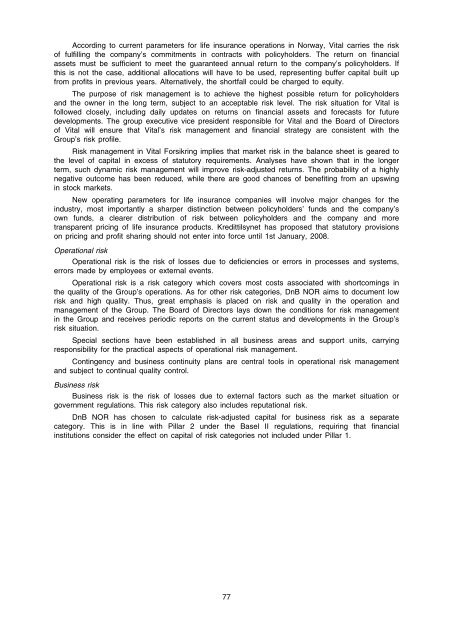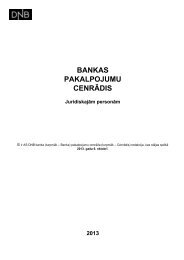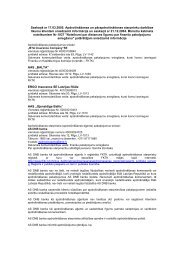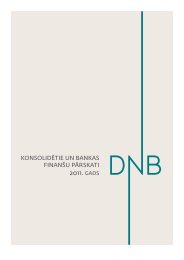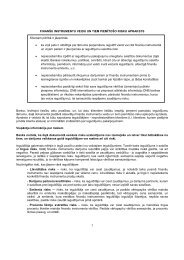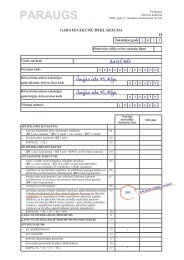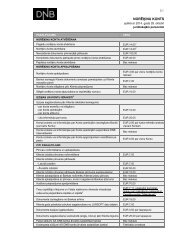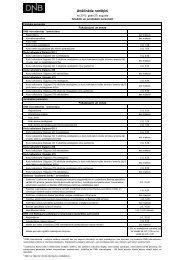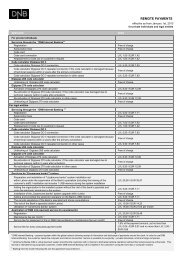Base Prospectus - Malta Financial Services Authority
Base Prospectus - Malta Financial Services Authority
Base Prospectus - Malta Financial Services Authority
You also want an ePaper? Increase the reach of your titles
YUMPU automatically turns print PDFs into web optimized ePapers that Google loves.
According to current parameters for life insurance operations in Norway, Vital carries the risk<br />
of fulfilling the company’s commitments in contracts with policyholders. The return on financial<br />
assets must be sufficient to meet the guaranteed annual return to the company’s policyholders. If<br />
this is not the case, additional allocations will have to be used, representing buffer capital built up<br />
from profits in previous years. Alternatively, the shortfall could be charged to equity.<br />
The purpose of risk management is to achieve the highest possible return for policyholders<br />
and the owner in the long term, subject to an acceptable risk level. The risk situation for Vital is<br />
followed closely, including daily updates on returns on financial assets and forecasts for future<br />
developments. The group executive vice president responsible for Vital and the Board of Directors<br />
of Vital will ensure that Vital’s risk management and financial strategy are consistent with the<br />
Group’s risk profile.<br />
Risk management in Vital Forsikring implies that market risk in the balance sheet is geared to<br />
the level of capital in excess of statutory requirements. Analyses have shown that in the longer<br />
term, such dynamic risk management will improve risk-adjusted returns. The probability of a highly<br />
negative outcome has been reduced, while there are good chances of benefiting from an upswing<br />
in stock markets.<br />
New operating parameters for life insurance companies will involve major changes for the<br />
industry, most importantly a sharper distinction between policyholders’ funds and the company’s<br />
own funds, a clearer distribution of risk between policyholders and the company and more<br />
transparent pricing of life insurance products. Kredittilsynet has proposed that statutory provisions<br />
on pricing and profit sharing should not enter into force until 1st January, 2008.<br />
Operational risk<br />
Operational risk is the risk of losses due to deficiencies or errors in processes and systems,<br />
errors made by employees or external events.<br />
Operational risk is a risk category which covers most costs associated with shortcomings in<br />
the quality of the Group’s operations. As for other risk categories, DnB NOR aims to document low<br />
risk and high quality. Thus, great emphasis is placed on risk and quality in the operation and<br />
management of the Group. The Board of Directors lays down the conditions for risk management<br />
in the Group and receives periodic reports on the current status and developments in the Group’s<br />
risk situation.<br />
Special sections have been established in all business areas and support units, carrying<br />
responsibility for the practical aspects of operational risk management.<br />
Contingency and business continuity plans are central tools in operational risk management<br />
and subject to continual quality control.<br />
Business risk<br />
Business risk is the risk of losses due to external factors such as the market situation or<br />
government regulations. This risk category also includes reputational risk.<br />
DnB NOR has chosen to calculate risk-adjusted capital for business risk as a separate<br />
category. This is in line with Pillar 2 under the <strong>Base</strong>l II regulations, requiring that financial<br />
institutions consider the effect on capital of risk categories not included under Pillar 1.<br />
77


